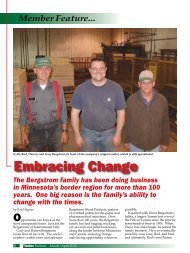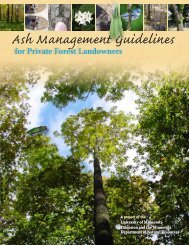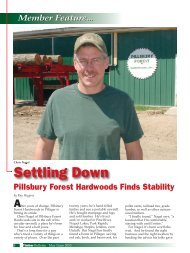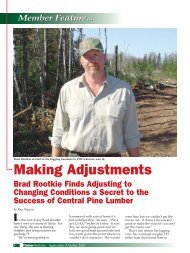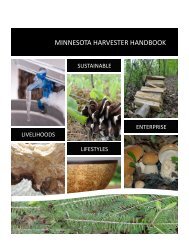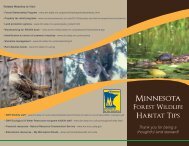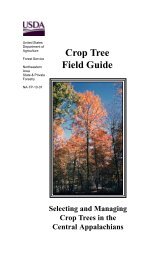Ash Management Guide for Private Forest Landowners
Ash Management Guide for Private Forest Landowners
Ash Management Guide for Private Forest Landowners
Create successful ePaper yourself
Turn your PDF publications into a flip-book with our unique Google optimized e-Paper software.
Chapter 4The Emerald<strong>Ash</strong> BorerA little package carrying big troubleEmerald ash borer (EAB) is anon-native insect that kills ashtrees; it was found in St. Pauland near Houston County, Minnesota in2009. EAB is the focus of ef<strong>for</strong>ts to guidemanagement of ash stands on public andprivate <strong>for</strong>ested lands. The discoveryof this invasive insect in Minnesota isone of the main reasons this <strong>Guide</strong> wasdeveloped.Life cycleEmerald ash borer starts out as a flat,rust-colored egg, just a smidge biggerthan the period at the end of this sentence.A single female will lay 80 eggs orso on the bark of ash trees in summer.A lanky white larva emerges, burrowsinto the bark, and begins eating tissuesbetween the sapwood and bark. In theprocess, it cuts off the conduits that carrynutrients from roots to leaves and sunmade sugars from leaves to the rest of thetree. It will feed and grow all summer.The next spring the larva morphsinto a pupa. In early summer the pupadevelops into an adult beetle. Two orthree weeks later, the beetle bores out ofthe bark, leaving a telltale D-shaped escapehole. Preparing to overwinter, a larvaechews a shallow hole in the sapwood(< 1 ⁄2 inch deep). Newly emerged adultsAdult EAB (actual size1 ⁄3 - 1 ⁄2 inch)Photo: Jeff Hahn23



